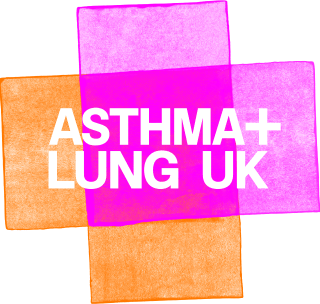A pneumothorax happens when air leaks out of the lung. This page has information on pneumothorax in adults.
- What is a pneumothorax?
- What causes a pneumothorax?
- What are the symptoms of a pneumothorax?
- How is a pneumothorax treated?
- What happens after a pneumothorax?
We also have information about pneumothorax in children.
What is a pneumothorax?
A pneumothorax is a collapsed lung. A pneumothorax happens when air leaks into the pleural cavity. This is the space between the outside of your lung and your ribcage. A small pneumothorax may cause few or no symptoms. A large pneumothorax can squash the lung and cause it to collapse.
A bilateral pneumothorax is when air leaks out of both lungs and causes them to collapse – but this is rare.
Call 999 if
you or someone you’re with becomes breathless with sudden chest pain.
Tension pneumothorax
If air continues to get into the pleural space as you breathe, this can start to squash organs like your other lung and heart. This is called a tension pneumothorax and can be life-threatening. Emergency treatment is needed to release the trapped air.
What causes a pneumothorax?
Primary spontaneous pneumothorax (PSP)
This is when a pneumothorax happens in an otherwise healthy person, for no obvious reason. It’s the most common type of pneumothorax and happens most often in healthy young adults. Men are more likely to have a pneumothorax than women. PSP is also more likely to happen in tall, thin people.
PSP happens due to a small tear on the outer part of the lung. The reasons for this aren’t always clear, but researchers currently believe that this happens when blebs and bullae on the lung burst.
What are blebs and bullae?
Blebs are small air-filled blisters that can form on the surface of your lung. Bullae are pockets of air that can form within your lung tissue. More research is being done into how they are formed and why they are often found in people with PSP.
Secondary spontaneous pneumothorax
This is when a pneumothorax happens in someone who has an existing lung condition. It’s more likely to happen if the condition weakens the edge of the lung - this makes it more likely to tear. Conditions that can cause a pneumothorax are:
- chronic obstructive pulmonary disease (COPD)
- tuberculosis (TB)
- sarcoidosis
- cystic fibrosis
- lung cancer
- idiopathic pulmonary fibrosis (IPF)
- lymphangioleiomyomatosis (LAM)
Injury or trauma
Pneumothorax can be caused by:
- a chest injury in an accident like a car crash
- surgery where a needle is inserted into your chest
- acupuncture needles. These can cause a pneumothorax if they puncture the lining of your lung
- lung surgery, such as endobronchial valve placement to treat emphysema.
Environmental factors
You are more likely to have a pneumothorax if you smoke tobacco or cannabis (weed). Vaping can increase the risk of pneumothorax too.
Pneumothorax has also been linked to air pollution.
Familial pneumothorax
1 in 10 people have a family member who has also experienced a pneumothorax. This is called familial pneumothorax.
This can happen at any age and is important because the pneumothorax can lead to one of a range of underlying genetic conditions being diagnosed, like:
- Birt-Hogg-Dubé syndrome
- Marfan syndrome
- vascular Ehlers-Danlos syndrome
- Loeys-Dietz syndrome
- tuberous sclerosis
- alpha-1 antitrypsin deficiency.
Menstruation (periods)
If you have a pneumothorax three days before or after the start of your period, it could be a catamenial pneumothorax. This type of pneumothorax is more common in your right lung and can happen more than once. The reasons for this are unknown, but early research has linked it to endometriosis.
What are the symptoms of a pneumothorax?
Symptoms include:
- a sudden, sharp stabbing pain in your chest or shoulder
- chest pain that gets worse when you breathe in
- breathlessness
- a dry cough.
You might also hear or feel clicking, bubbling, or crunching in your chest.
You’ll usually be diagnosed by a chest X-ray. Sometimes you might need a CT scan or ultrasound of your chest.
How is a pneumothorax treated?
The aim of treatment is to relieve the pressure on your lung so that it re-expands. The type of treatment you have will depend on:
- the size of pneumothorax
- whether the air leak is increasing
- what has caused it.
If your pneumothorax is caused by an underlying lung condition or chest trauma, you are more likely to need treatment.
If the pneumothorax is small, the leak usually heals itself and the trapped air is gradually absorbed by your body. This normally takes 1-2 weeks. You can use over-the-counter painkillers to manage the pain and you might also be given oxygen. You may have an X-ray after a week or so to check if the pneumothorax has healed.
- inserting a needle into your chest and sucking the air out through a very thin tube, using a syringe. This is called aspiration
- inserting a chest drain. This is a small plastic tube that’s inserted through the chest wall. The drain allows air out but not back in, so your lung can re-inflate. The tube is secured and stays in place until the air leak is fixed and the lung re-inflated. You will have to stay in hospital until it has been fixed. The length of your stay will depend on how well you respond to treatment, but it’s usually at least 1-2 days.
Before having either of these treatments, your chest will be numbed with local anaesthetic so you won’t feel any pain.
How a chest drain works
If a pneumothorax happens more than once on the same side, or an air leak continues despite aspiration or a chest drain, you might need to have a small operation.
The operation will seal the weak areas on the edge of the lung where the air leaks are happening. This surgery may also involve a form of pleurodesis, where the lung is stuck to the inside of the chest wall, to make sure the lung can’t collapse again.
What happens after a pneumothorax?
Will it happen again?
If you have a spontaneous pneumothorax, there is a risk it will happen again. This happens to up to 5 in 10 people and is normally within five years of their initial pneumothorax. If a pneumothorax happens more than once on the same side, you might have a small operationto ensure it cannot happen again.
If you’ve had a pneumothorax and you smoke, stopping smoking will reduce the risk of it happening again.
Flying
You shouldn’t fly while you have a pneumothorax, or for a short time afterwards. The high altitude that planes reach could cause you to have another pneumothorax, so it’s important to wait until your doctor says it is safe before flying. This is usually one week after your pneumothorax has completely improved. A chest X-ray will be done to confirm that your pneumothorax has been treated successfully.
When you’re ready to fly again, make sure to tell your travel insurance company as failing to do so could impact any claims.
Scuba diving
You should not scuba dive if you have had a pneumothorax because of the risk of your lung collapsing again underwater. In some cases, surgical treatment can remove this risk. Ask your health care professional for more information.
Anxiety and stress
It’s normal to feel anxious, worried or stressed after having a pneumothorax. Our health advice has lots of information that can help you to look after your mental health.
Physical activity
There is no link between physical activity and pneumothorax, so you can be active again as soon as your symptoms stop. However, it’s a good idea to wait until you are fully recovered and have attended your follow-up appointment before you take part in any intense exercise or sports involving physical contact.
Genetic testing
You may have further tests to identify the cause of your pneumothorax, including genetic testing. This is especially important if you have a family history of pneumothorax.
This content is currently being reviewed. Updated information will be available soon.








